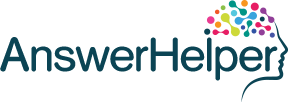Learning Management Systems (LMS) are becoming an integral part of educational institutions. Schools are adopting platforms like Moodle, Canvas, and Blackboard to improve the delivery and engagement of educational content. With features such as customizable dashboards, automated grading, and analytics, LMS streamline the learning process. However, the benefits of LMS go beyond just administrative tasks, and their impact on student outcomes and the overall educational experience is significant, warranting further exploration.
Highlights
- Moodle, Canvas, and Blackboard are among the popular Learning Management Systems (LMS) widely adopted by schools.
- Mobile compatibility is a key factor in LMS adoption, enabling access to materials and discussions on-the-go.
- Schools consider ease of use, integration, and scalability when selecting an LMS to meet their specific needs.
- Other notable LMS options include Schoology, Edmodo, and Google Classroom, each with its unique features and benefits.
- The chosen LMS should enhance student engagement, teacher training, and community building, while also providing cost savings and improved educational experiences.
Top Learning Management Systems for Schools
Numerous learning management systems (LMS) are available for schools, each offering a range of features and functionalities.
Moodle is a popular open-source LMS, known for its flexibility and customization options. Canvas and Blackboard are also widely used, offering a range of tools for course management and student engagement.
Many LMS platforms prioritize mobile compatibility, allowing students and teachers to access course materials and participate in discussions on-the-go.
Other notable LMS options for schools include Schoology, Edmodo, and Google Classroom.
When selecting an LMS, schools consider factors such as ease of use, integration with existing systems, and scalability.
By choosing the right LMS, schools can create a seamless and engaging learning experience for their students.
Effective LMS platforms facilitate communication, collaboration, and student success.
Key Features of Popular LMS Platforms
As schools evaluate various learning management systems to meet their specific needs, understanding the key features of popular LMS platforms is essential.
Popular LMS platforms prioritize user experience, offering intuitive interfaces that simplify guidance and facilitate seamless interactions between students, teachers, and administrators. Many platforms also emphasize mobile accessibility, providing optimized mobile apps or responsive designs that enable users to access course materials, submit assignments, and engage with peers on-the-go.
Additionally, key features may include customizable dashboards, automated grading, and strong analytics to track student progress and identify areas for improvement.
Benefits of Implementing an LMS in Schools
While the primary function of an LMS is to streamline the management of educational courses, its benefits extend far beyond administrative tasks. Implementing an LMS in schools can lead to significant cost savings by reducing the need for physical materials and minimizing the administrative burden on teachers and staff.
Additionally, LMS platforms often provide opportunities for teacher training and professional development, enabling educators to stay up-to-date on the latest teaching methods and technologies. An LMS can also facilitate communication and collaboration among teachers, students, and parents, promoting a sense of community and enhancing the overall educational experience.
How LMS Systems Enhance Student Engagement
By leveraging interactive tools and multimedia content, Learning Management Systems can greatly enhance student engagement in the learning process. This is achieved through interactive learning modules, gamification, and simulations that promote hands-on learning experiences.
Students can access course materials, participate in online discussions, and collaborate with peers, cultivating a sense of community and belonging. LMS systems also facilitate student feedback, enabling teachers to track progress, identify knowledge gaps, and adjust instruction accordingly.
Regular assessments and feedback mechanisms empower students to take ownership of their learning, set goals, and work towards achieving them. By incorporating these features, LMS systems promote a student-centered approach, increasing motivation and participation, and ultimately enhancing student engagement.
Effective LMS implementation can lead to improved academic outcomes and student success.
Streamlining Administrative Tasks With an LMS
The enhanced student engagement facilitated by Learning Management Systems can only be fully realized if teachers and administrators are free to focus on teaching and student support. This is achieved by streamlining administrative tasks through the LMS, allowing staff to allocate more time to student-centered activities.
Administrative efficiency is improved by automating routine tasks such as attendance tracking, grade reporting, and course scheduling. Task automation also reduces the likelihood of human error, ensuring accuracy and consistency in administrative processes.
The Role of LMS in Personalized Learning
How can schools immerse themselves in the diverse needs of individual students in a standardized educational system?
Learning Management Systems (LMS) play a crucial role in facilitating personalized learning. An LMS enables adaptive learning by allowing teachers to tailor instruction to individual students’ needs, abilities, and learning styles. This approach cultivates learner autonomy, equipping students to take ownership of their learning.
By providing real-time feedback and assessment data, an LMS helps teachers identify areas where students require extra support or enhancement. This enables targeted interventions, ensuring students receive the right level of challenge and support.
Choosing the Right LMS for Your School
As schools consider implementing a Learning Management System (LMS), selecting the right platform is essential to guarantee a seamless integration with existing infrastructure and effective support for teaching and learning.
A thorough evaluation of different LMS options is significant to ascertain the chosen platform meets the school’s specific needs. Cost considerations, including licensing fees, maintenance, and support costs, should be carefully assessed to confirm the selected LMS fits within the school’s budget.
Additionally, gathering user feedback from teachers, students, and administrators can provide useful perspectives into the platform’s usability and effectiveness.
Best Practices for Successful LMS Integration
While selecting the right LMS is a significant step, effective integration is equally important to guarantee seamless adoption and ideal usage. To overcome integration challenges, schools must develop a strategic plan that addresses technical, administrative, and pedagogical aspects.
One key aspect is user training, which should be thorough, ongoing, and customized to the needs of various stakeholders. Schools should also establish clear communication channels, define roles and responsibilities, and set realistic timelines.
Furthermore, it is essential to continuously monitor and evaluate the integration process, making adjustments as needed. By following these best practices, schools can facilitate a smooth shift to the new LMS, maximize its benefits, and ultimately enhance the learning experience for students, teachers, and staff.
Conclusion
The adoption of Learning Management Systems has revolutionized educational delivery in schools. By improving student engagement, streamlining administrative tasks, and facilitating personalized learning, LMS platforms have enhanced overall educational outcomes. Schools can choose from a variety of LMS options, each offering unique features and benefits. Effective LMS integration requires careful selection and implementation. With the right LMS in place, schools can cultivate a more collaborative and flexible learning environment, leading to improved student success.


